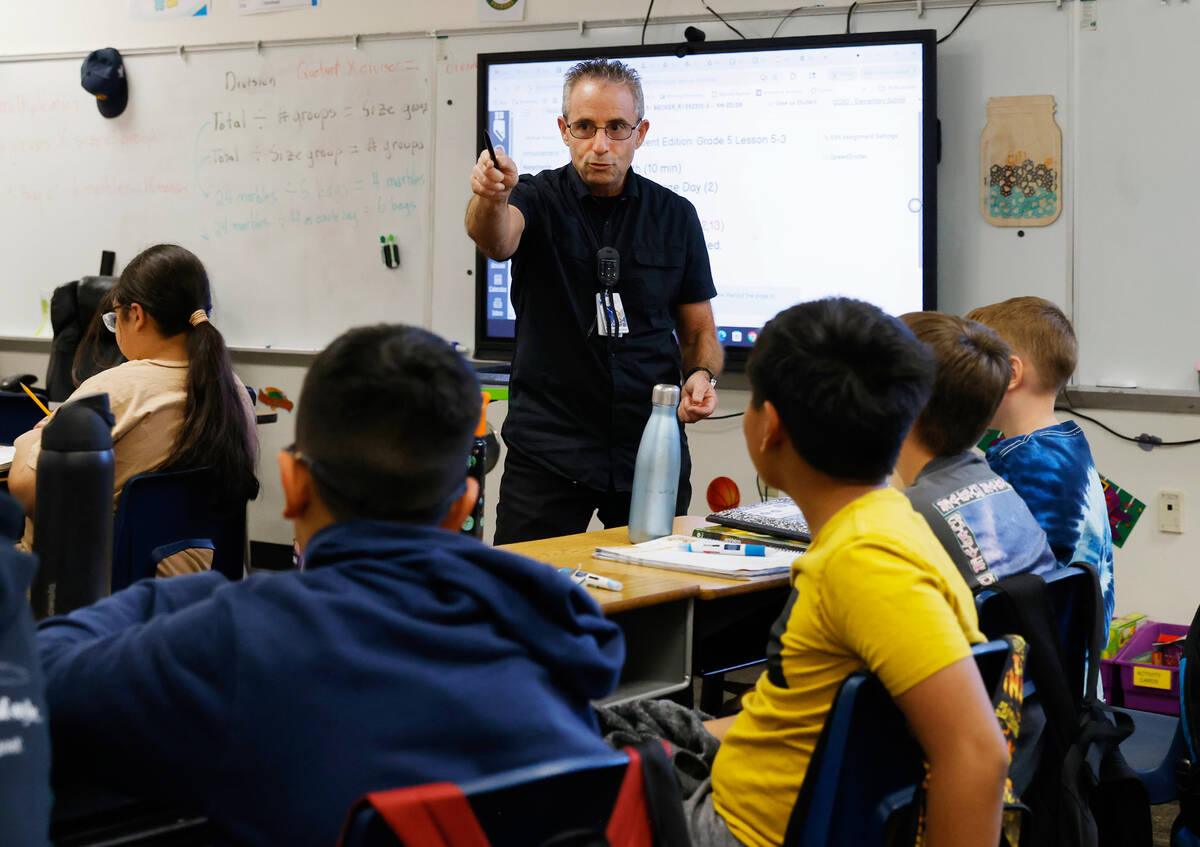EDITORIAL: Many reasons to be leery of AI in the classroom
The Clark County School District needs to develop intelligence in the classroom. It’s just not likely to come from AI.
The artificial intelligence revolution is here, and it’s not going away. Technology companies are rushing to build massive data centers to support the next big thing. Businesses and individuals are working through what AI means for their respective industries. Perhaps it will encourage more recent graduates to pursue trade schools as this new tool could lead to the elimination of many traditional white-collar jobs.
AI has invaded the education sphere, too. Many college students have realized that they don’t need to spend hours researching and writing papers. They can simply feed ChatGPT a prompt 10 minutes before their deadlines and turn in whatever the program spits out. Some professors even now use AI to grade papers.
You don’t have to be a Luddite to recognize this dystopian loop. A student uses AI to produce a paper that a teacher then grades with AI. That’s outsourcing, not education. It defeats the point of writing assignments.
Writing isn’t merely about putting words on a page. It’s a way to train the mind. Students must sift through and compile information. They synthesize what they’ve learned on paper. They are forced to consider order and structure. The ability to write well is a tangible sign of the ability to think well.
That doesn’t happen when students use AI as a shortcut to the final product.
While students will no doubt benefit from learning to use these tools to improve efficiency and productivity, there are reasons to be leery of bringing unchecked AI into the classroom, which the district is doing. Around a dozen schools are running pilot programs involving students and AI. That includes at least one elementary school.
Brandi Mora, the principal of Richard Bryan Elementary School, says she wants teachers to show students how to use AI properly. The students already have AI programs on their Chromebooks.
In theory, that’s possible. AI programs could give each student tailored feedback on what he or she specifically needs to work on. Teachers could use AI for feedback on their lesson plans and to avoid having to reinvent the wheel.
In practice, everyone using AI is going to need to ensure that AI is supplementing learning, not replacing it. The district needs to take the lead. It should insist that teachers incorporate pen-and-paper writing assignments that are done in class. Teachers should give students tests in class without access to electronic devices.
Without these safeguards in place, it’s very likely the results of AI will produce absurdities similar to grade inflation. High schools will graduate students who can’t do elementary-level math problems but know how to log into ChatGPT.

















